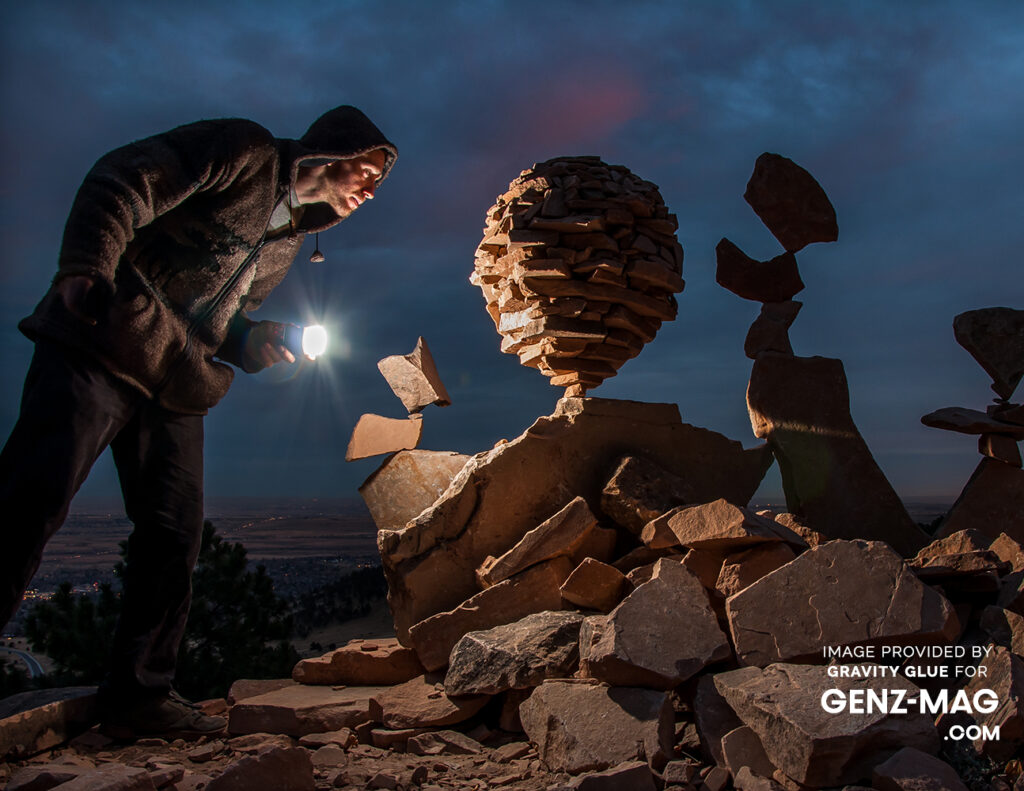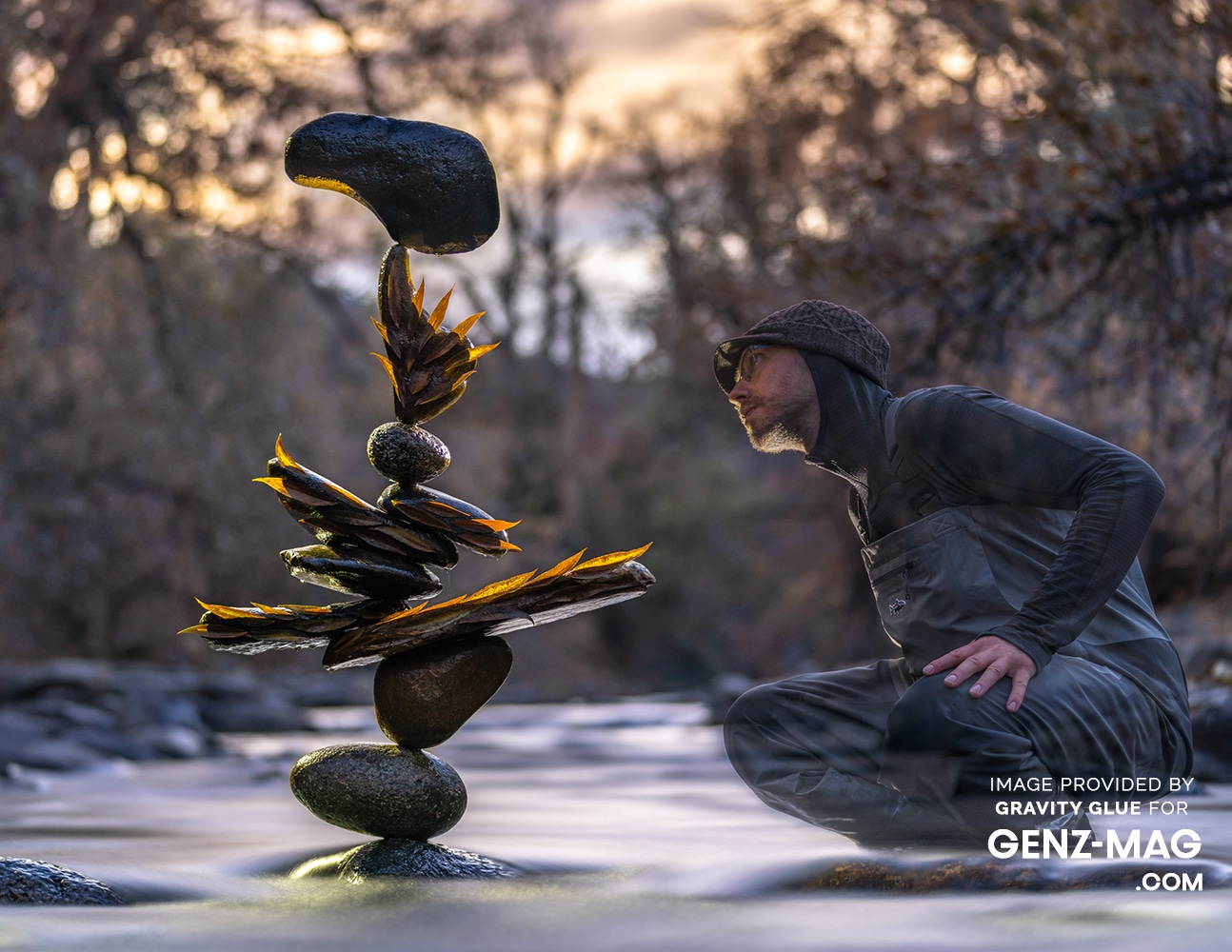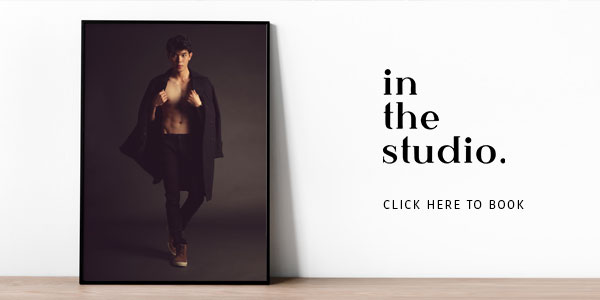The current world we live in is in tumultuous condition, and it’s important to find our stillness despite the rocky challenges we face in our daily lives. It is necessary to self-consciously evaluate and assess how to find peace and protect our mental health to help ourselves grapple with life’s uncertainties and get through it for better days. Whether you toil over an oil canvas, or grind over creating a short film, or endlessly reciting the poem or poetry you’ve been working on for years, research suggests that the act of creating any form of art has powerful healing properties. Further, it is proven to be a great source of making someone stay at peace.
There is no other person to represent that than Michael Grab, a pure talent who has a special kind of art that involves balancing or building rock sculptures in positions that seemingly defy the laws of gravity. Grab, a popular artist who has explored balancing rocks as an expressive outlet, has executed impeccable works and featured on all corners of social media platforms. His works are almost look unreal as if rocks are his paid artists performing for him. He became established and well-known for his creation that shows unique aesthetic elements and a technique he called ‘gravity glue‘- as he only uses gravity to form and create such magnificent built without using any adhesive.
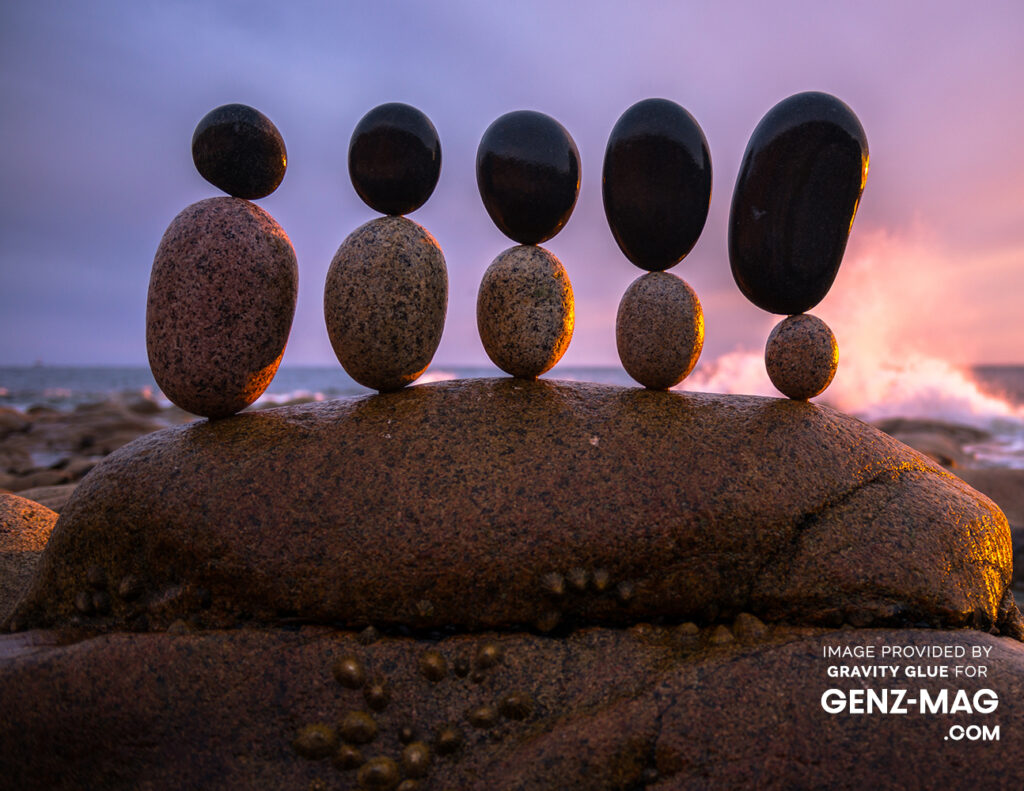
Michael created a career out of the art of balancing stones in Nature and has developed a significant amount of patience and skills. Either because of his knack of knowing the rocks or his extreme dexterity that has evolved over the years, that surely made him at the top of this particular field of art. As we are in awe of the amount of focus and patience he puts in to form seemingly impossible rock arrangements, we asked how he seems to make everything possible and how this kind of art helped him discover the many possibilities and benefits it could bring on one’s mental health.
How did your creative passion for balancing rocks start? (Tell us that specific story about “happy accident”)
I call it a “happy accident” because it started spontaneously one summer day while I was hanging out at the creek here in Boulder, Colorado, with a friend. We were both in a psychedelic state of mind at the time and looking for obsidian. I had no idea that I would discover something I loved doing so much that day, but here we are!
What are the fundamentals of balancing a rock
Physically, I’m looking for tiny edges or indentations in the natural surface texture of the rocks. The balance works like a camera tripod in terms of centering a mass between 3 points of contact. In order for a rock to balance on a “point,” I’m looking for very tiny edges, very close together, that will provide those three critical contact points to center the rock. The closer they are together, the more difficult it becomes, and the more unbelievable the balance appears.
This is where the meditative aspect comes in because centering a rock between 3 tiny edges is a process of listening or feeling for the tiny vibrations given off when the rocks touch one another. It requires a kind of deep, meditative focus that can take lots of time, practice, and patience to achieve.
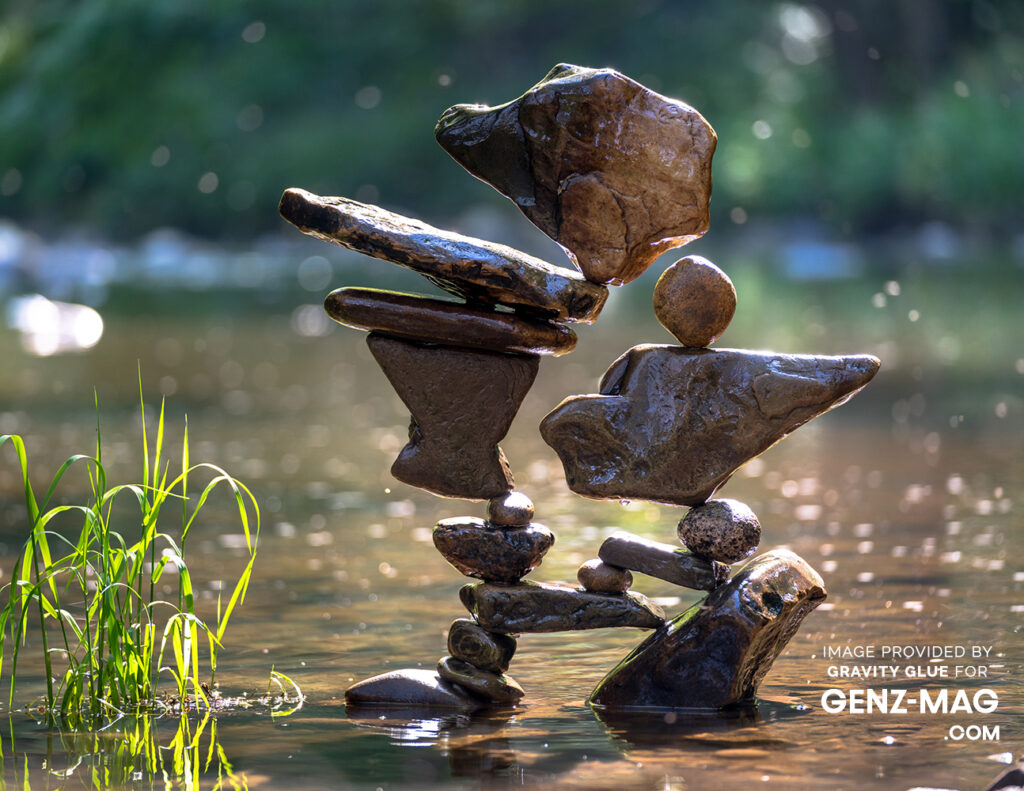
Can you tell us the process (methods) in forming a piece of balanced rock and how it helps you in your meditation practice? (What were/are in your thoughts when doing so?)
To continue from my previous answer, the process itself is a form of meditation because these vibrations only live in the here and now moment, which requires all of my attention to avoid losing control and rocks falling / potential injury.
When I begin, my mind may be full of extraneous thoughts about any aspect of life, but as the process goes on, those thoughts usually dissolve into the complex vibrations I’m feeling and making adjustments for. Another important aspect for me is this presence in reality, which is to say presence in Nature, where I stop processing my surroundings with usual language. Sometimes I will sit in a spot I choose for minutes or hours until my mind naturally clears itself of typical chatter, in essence, getting into a kind of meditative flow state of consciousness, where all there is here and now.
Was there a moment you feel like balancing is not as easy as the other days you’ve done it?
Not really. The evolution of skill here is very organic. Every experience touches me in a new and unique way but is also cumulative in quality and technical execution.
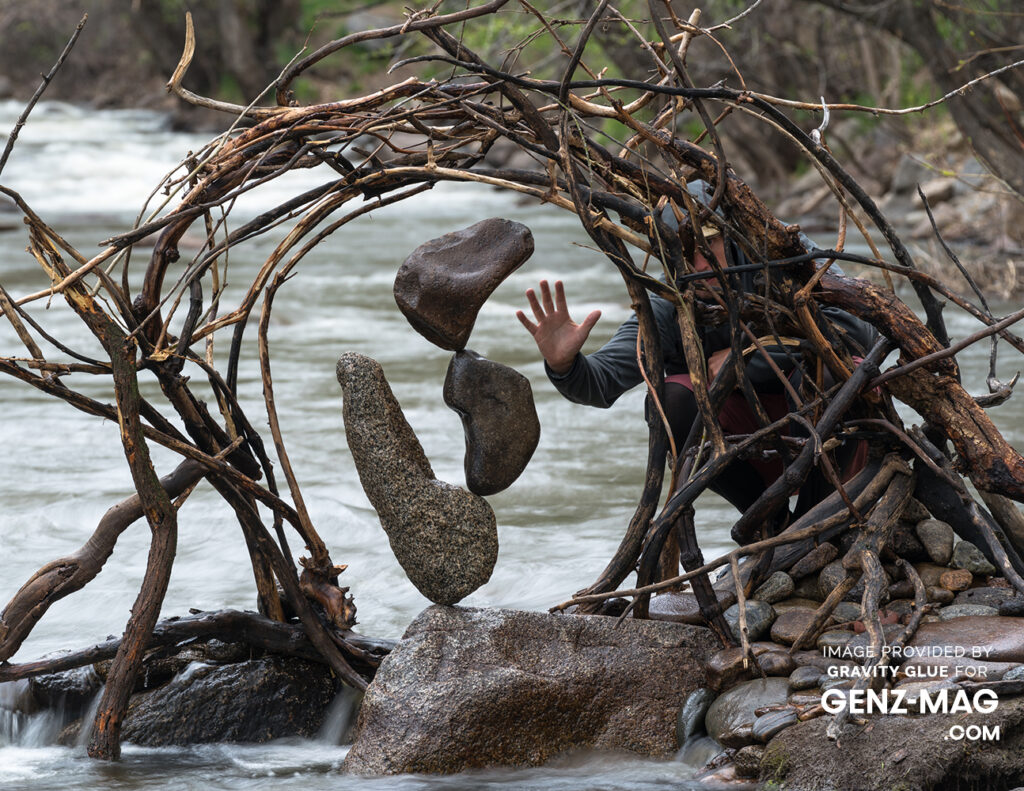
Although Rock balancing is considered a form of artistic expression and beneficial to one’s mental health, some environmentalists believe that it spoils pristine environments and could be a threat to wildlife; what is your take about it?
I reckon it’s a complex subject that doesn’t have a clear solution. The practice, as I know it, is about reconnecting with this primal human condition of being in Nature. But not only reconnecting — also amplifying that connection via the creative process. For me, the process is about cultivating a deeper awareness of the places I work. It’s about listening and paying attention to everything, including wildlife, changes in wind, tides, everything that’s going on that contributes to this infinitely complex system of Nature. If anything, it trains a deep awareness and reverence for the natural world.
As per my own practice, I’m highly selective in the materials I choose to work with and where they come from. And given the Nature that everything has an impact, not necessarily good or bad, the best I can do is to consciously minimize such impacts while doing what I feel I must do. This includes being mindful of the locations I choose to work. If the indigenous erosion rate is too low, I usually do not remove rocks because it will take longer for that system to absorb that disturbance. I do not make or hold rules for myself or others, but personally, I prefer to remove my work when I’m finished recording, so no one would ever know I was there. I figure that in shared space, this is the courteous way to operate, but also I feel personally attached to my creations, and prefer not to leave them behind once I leave, unless it’s overnight and intend to return the next morning.
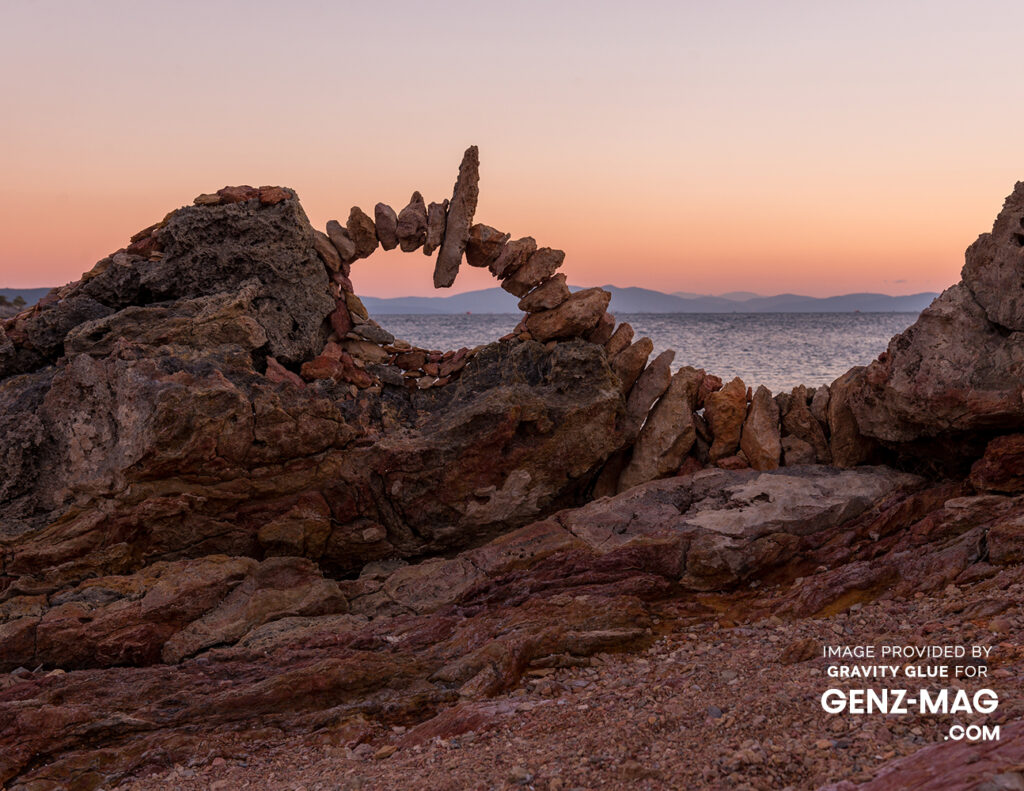
Personally, what benefits do you get in doing rock balancing?
Very simply, Creating with Nature in this way is like my yoga practice. It is a most romantic use of my time because Nature is constantly changing, always outside my control, always slightly unpredictable, and always requires that I focus and adapt to whatever is going on here and now. It has allowed me to cultivate a relatively nuanced awareness of my surroundings that seem to feed this primal human need for connection with Nature, which I think can be lacking in modern urban lifestyles.
What is the tallest you’ve built, and how long did you do it?
Tallest is not so important in my focus, as opposed to intricacy and elegance. However, I reckon the tallest structure I made was a pagoda-style tower, maybe 2.5 meters tall.
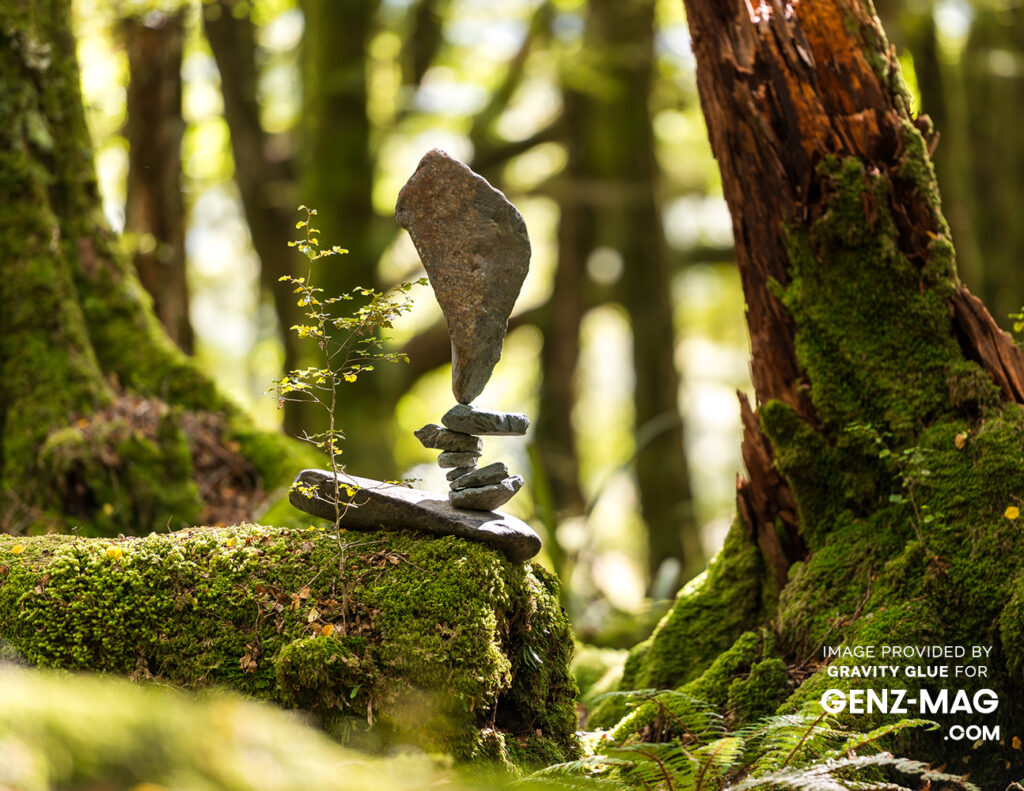
When do you usually stop putting the stone after the other? (was there some sort of limitation you put yourself in, or when can you say it’s pretty enough?)
I usually like to put the heaviest rock on top as a kind of crown piece to showcase and often will build up to that last rock in the most intricate/challenging way possible.
What advice will you give this generation and the coming ones about the importance of doing rock-balancing?
Rock balancing is an awareness artform. It is not about “leaving a mark” or creating permanent structures. For me, It’s about challenging one’s own ability and cultivating this sort of ritual connection with the natural world via creative active meditation. Much of the controversy with environmentalists is about people going into Nature, erecting countless rather clumsy, semi-permanent “stacks” and just leaving them. I think the true quality of this art form is in daily practice, focusing all that energy into single designs that are as intricate and challenging as possible — that for me is a more rewarding pursuit. And it cannot be overstated the value of cultivating both a meditative practice and rich connection with Nature, both of which are natural side-effects of Rock balancing.
More than being focused on the results or output of the rocks you will intend to stack or arrange, don’t forget to enjoy the process of searching and finding the balance. Allow yourself to express what you have within fully, enjoy every bit of meditative experience, and practice how to stay still amid a very turbulent environment.
Michael tells more about his art and thoughts process at gravityglue.com. His stunning works and creation can be found on his YouTube channel and his Instagram account.
